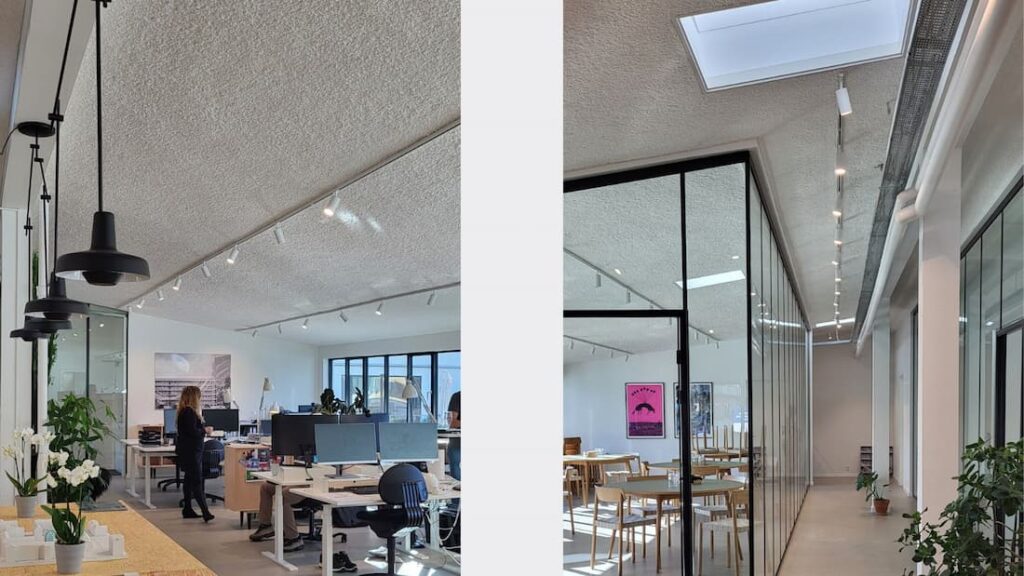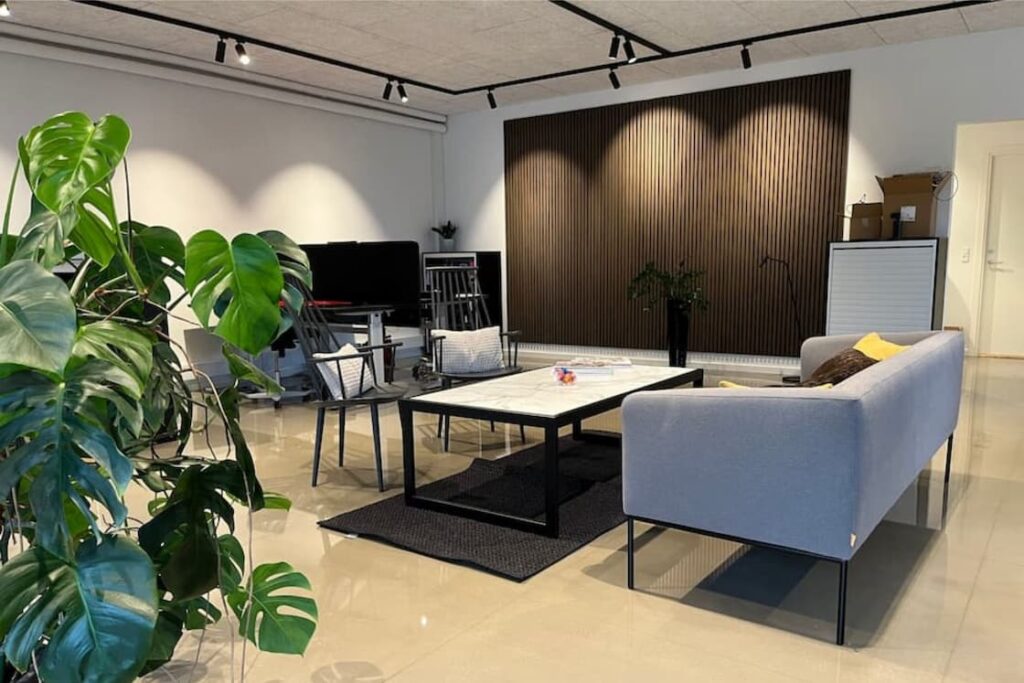Design principles for office lighting
- Af Mette Bergholdt
- Last updated 1. March 2024
The right lighting can improve productivity, reduce eye strain, and create a comfortable work environment. At ANTIDARK, we understand the importance of quality lighting, and in this post, we will share some basic design principles for office lighting, including placement, intensity, and color temperature.
If you want to know even more about office lighting, we have gathered more good advice on the page below.

A bit about the author:
Mette Bergholdt
Share post:
Related posts:
The ultimate guide to task lighting in different environments
1. Placement of lighting in the office environment
The first step in creating effective lighting in the workplace is to consider the placement of light sources. The lighting should be positioned to minimize glare on computer screens and avoid creating harsh shadows.
It will rarely be sufficient to use one type of light in the workplace. Instead, multiple different types of lights should be used, which are suited to the various work areas and provide good dynamics.
General lighting
The first step is to have good general lighting that ensures even light distribution throughout the room. This can be achieved with luminaires and lamps that emit a diffused light or through a track system with suitable spotlights. The light source should be shielded and positioned so that the light enters from the side of the desk to avoid glare or reflections on the computer screen.
In the case of a large open-plan office, it’s not ideal to use the same general lighting everywhere. It’s better to customise the lighting to create variation between corridors, workstations and other areas to avoid a monotonous and uninspiring environment.
Accent Lighting
Accent lighting is light used to highlight certain parts of a room, such as a board, a meeting table, or decorative elements. This type of lighting adds variation to the room’s lighting and can also be used to brighten the room by illuminating different walls. Consider where accent lighting could be beneficial in your office decor. It could be in a lounge area where a mood-setting lighting is desired, an architectural feature that needs to be highlighted, or a large light wall that can reflect the light.
Lighting at the Workplace
In certain office environments, it may be a good idea to have extra lighting at the workstations, so that employees can adjust the light themselves. A simple solution could be a desk lamp that provides focused light. Alternatively, a floor lamp or a wall lamp could be considered. The important thing is to ensure that the lamp does not cause glare, and therefore the light should be positioned so that it falls in from the side and is below eye level.
2. The ideal brightness
The light intensity, meaning how bright a room is, also has a significant impact on the work environment. A brightness level that is too low can lead to eye strain and make employees drowsy, while too intense lighting can be uncomfortable and cause glare. It is therefore important to find the right balance, so that the lighting is sufficient to perform work tasks, but not so strong that it becomes bothersome.
Here are some tips to ensure the right brightness in the office:
- Combine natural and artificial light: Utilize natural light as much as possible, but supplement with good artificial lighting.
- Use of dimmable light sources: Dimmable light sources are ideal as they allow for adjusting the brightness as needed. This is useful both throughout the seasons and during the day, as the amount of natural light changes.
- Choose the right type of light source: Different types of light sources have different brightness levels. LED lamps are often a good choice, as they offer a good balance between brightness and energy efficiency.


3. Choose the right colour temperature
A common mistake in office lighting is the use of too ‘warm’ light, which means that the Kelvin value of the light source is too low. Research has shown that the color temperature significantly affects our energy levels and mood. Prolonged exposure to warm light can lead to drowsiness and fatigue, which negatively affects work efficiency.
- Use daylight as a reference: Natural daylight has a high Kelvin value and is ideal for maintaining energy and focus. Make sure to utilize natural light as much as possible and supplement with artificial lighting that mimics the color temperature of daylight.
- Choose the right Kelvin value: To avoid fatigue and drowsiness, it’s important to choose light sources with the right Kelvin value. In office environments, this should be 3000 or higher to create a more invigorating and energising environment.
- Adapt the color temperature: Just like with brightness, it is also a good idea to choose light sources that allow for adjustment of the color temperature. This provides the option to switch to warmer tones for relaxing activities or meetings and cooler tones for more work-intensive tasks.
Contact us
Are you interested in improving the lighting in your office? At ANTIDARK, we are experienced in creating optimal lighting solutions that combine functionality with elegant design. Our team of lighting experts is ready to help you choose the perfect lighting that suits your specific needs and work environment.